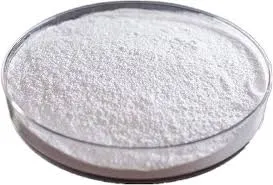
سبتمبر . 30, 2024 04:48 Back to list
Understanding Hydroxyethyl Cellulose CAS Number and Its Applications in Various Industries
Hydroxyethyl Cellulose An Overview
Hydroxyethyl cellulose (HEC) is a non-ionic, water-soluble polymer derived from cellulose, a natural polymer that is abundant in plant cell walls. Due to its unique chemical structure and properties, HEC has gained significant attention in various industries, including cosmetics, pharmaceuticals, food, and construction. The effective cas number associated with hydroxyethyl cellulose is 9004-62-0, providing a standard reference for its identification in chemical databases and regulatory texts.
Chemical Structure and Properties
HEC is categorized as a cellulose ether, a modified form of cellulose where hydroxyl groups are substituted with hydroxyethyl groups. This modification enables HEC to dissolve in water and offers enhanced properties compared to unmodified cellulose, such as improved thickening, stabilizing, and film-forming abilities. The molecular weight of HEC can vary significantly, making it suitable for numerous applications, from low-viscosity emulsions to high-viscosity formulations.
One of the most notable characteristics of hydroxyethyl cellulose is its ability to swell in water, forming a gel-like solution that is stable under diverse pH conditions. Furthermore, HEC exhibits rheological properties that allow formulators to control the viscosity and flow characteristics of their products effectively. This is particularly beneficial for industries where texture and stability are crucial, such as in the formulation of creams and lotions.
Applications in Various Industries
1. Cosmetics and Personal Care HEC is widely used in cosmetic formulations, particularly in lotions, creams, and gels. Its thickening properties and ability to enhance the texture make it a popular ingredient for providing a smooth and silky feel to products. Additionally, HEC acts as a stabilizer in emulsions, preventing the separation of oil and water phases, thus improving the overall efficacy and appearance of cosmetic products.
2. Pharmaceuticals In the pharmaceutical industry, hydroxyethyl cellulose plays a vital role in the formulation of controlled-release drug delivery systems. Its biocompatibility and water-retaining properties make it ideal for use in topical gels and ointments. HEC can also be utilized as a binder in tablet formulations, enhancing the integrity and stability of the drug products.
hydroxyethyl cellulose cas number

3. Food Industry HEC is approved as a food additive in several countries, where it is used to improve the texture and stability of various food products. It acts as a thickening agent and stabilizer, commonly found in sauces, dressings, and beverages. Moreover, HEC can enhance the mouthfeel of food products, making them more palatable to consumers.
4. Construction In construction, hydroxyethyl cellulose is utilized as an additive in cement-based products, including adhesives and sealants. Its water-retention properties help to enhance workability and adhesion, contributing to the overall performance and durability of construction materials.
Environmental Considerations
Another significant aspect of hydroxyethyl cellulose is its environmental profile. Being derived from natural cellulose, HEC is biodegradable and poses minimal risk to the environment. As industries increasingly shift towards adopting sustainable practices, the demand for eco-friendly additives like HEC is on the rise. This aligns with global trends focusing on reducing the environmental impact of synthetic polymers.
Conclusion
Hydroxyethyl cellulose, with its CAS number 9004-62-0, is a versatile and valuable polymer that finds applications across numerous industries. Its unique properties make it an essential ingredient in formulations ranging from cosmetics to pharmaceuticals and food products. As the demand for sustainable and efficient materials continues to grow, HEC is poised to play a vital role in developing innovative solutions that meet consumer needs while maintaining environmental integrity.
In summary, HEC holds promise not only due to its functional benefits but also its commitment to sustainability. With ongoing research and development, hydroxyethyl cellulose will likely continue to evolve, finding new applications and enhancing existing formulations to meet the dynamic demands of various industries.
-
Versatile Hpmc Uses in Different Industries
NewsJun.19,2025
-
Redispersible Powder's Role in Enhancing Durability of Construction Products
NewsJun.19,2025
-
Hydroxyethyl Cellulose Applications Driving Green Industrial Processes
NewsJun.19,2025
-
Exploring Different Redispersible Polymer Powder
NewsJun.19,2025
-
Choosing the Right Mortar Bonding Agent
NewsJun.19,2025
-
Applications and Significance of China Hpmc in Modern Industries
NewsJun.19,2025







